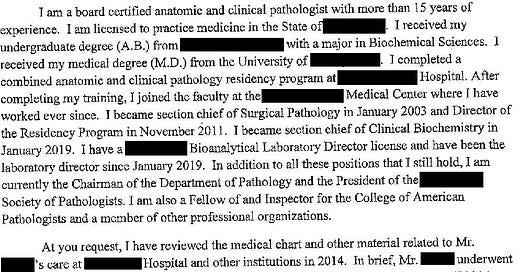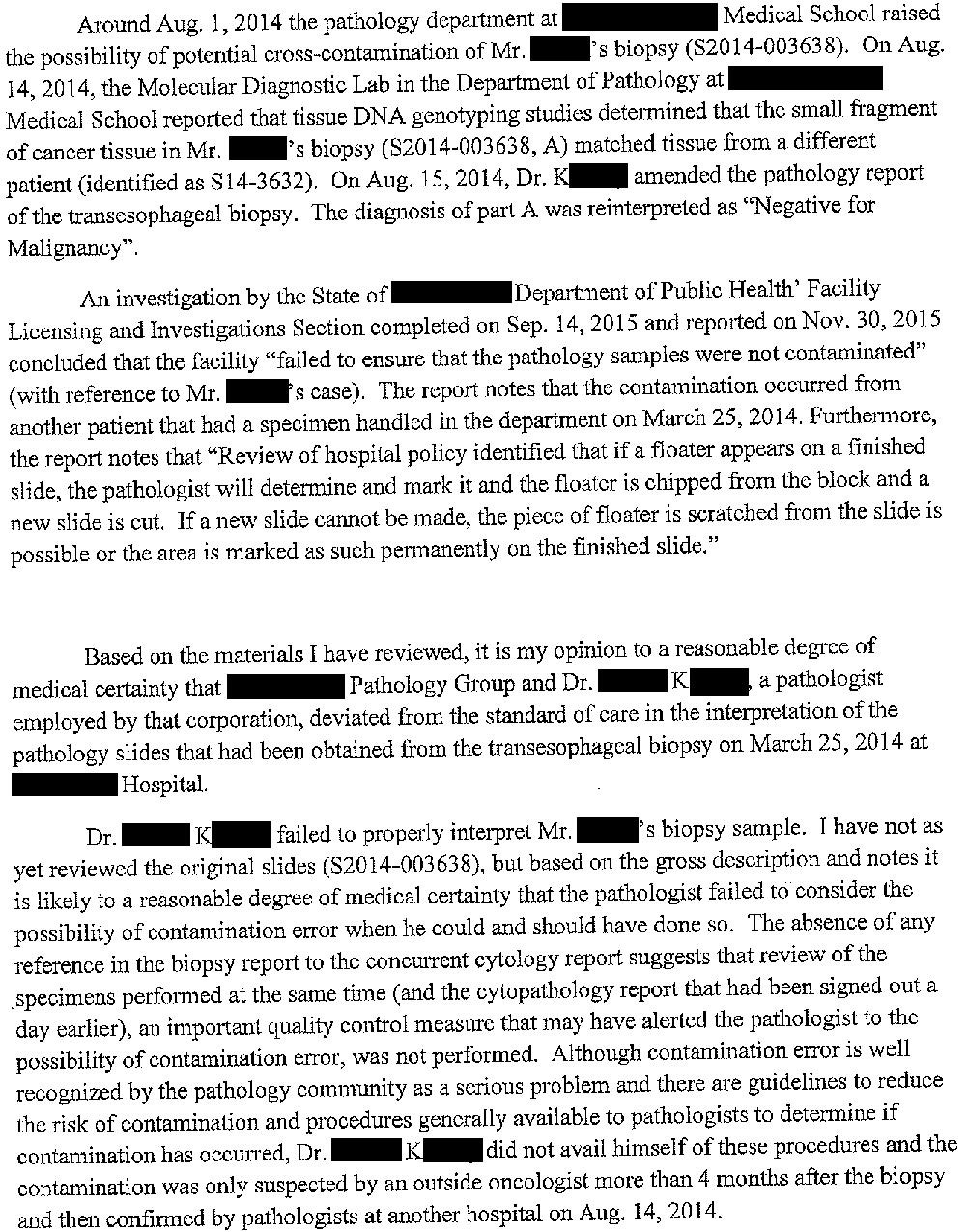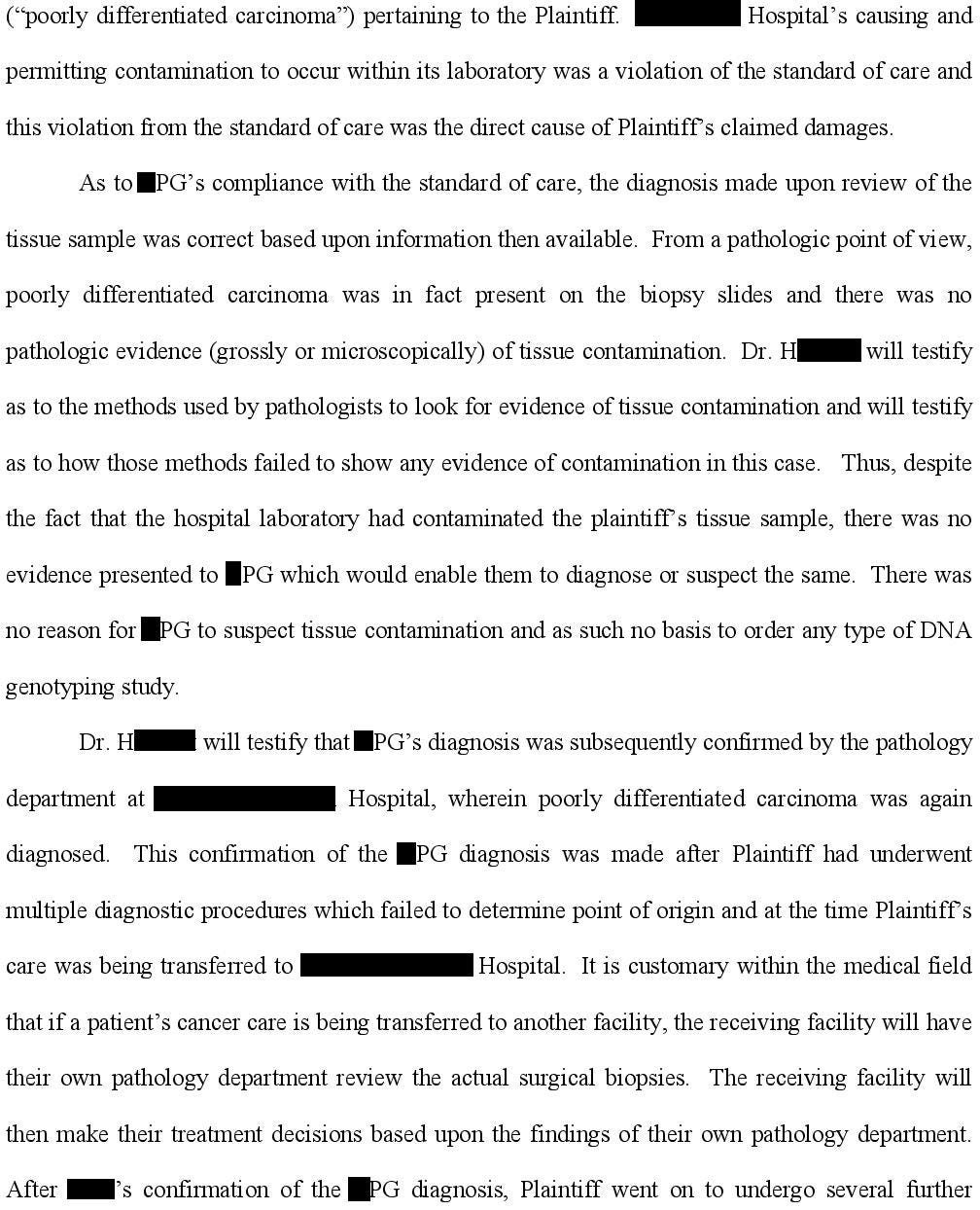A 53-year-old man underwent endoscopy with a transesophageal biopsy to investigate a lesion.
The pathologist reported “Poorly differentiated carcinoma, most consistent with GI primary”.
He also noted “the core biopsy in part A consists predominantly of blood and bland lymphocytes, however, a minute fragment of poorly differentiated carcinoma is also present”.
The patient was referred to multiple specialists.
He underwent a PET scan, mediastinoscopy, and bronchoscopy.
However, none of these tests revealed any other sign of cancer.
The patient was referred to an academic medical center.
The pathology slides were sent to the academic center, and their pathologists confirmed the presence of poorly differentiated carcinoma on the slide.
The patient underwent additional testing, still with no sign of cancer.
The pathology department became concerned that the slide had been contaminated with a tissue from another patient.
A DNA genotyping study was performed, and confirmed that the carcinoma seen on the slide did not come from the patient.
The patient was notified of the error.
Further investigation revealed that the tissue came from a different patient who had a biopsy on the same day.
Join thousands of doctors and lawyers on the email list.
This error would ultimately trigger two separate lawsuits.
The initial lawsuit was filed against the pathology group.
The original pathologist (Dr. K) was not named as a defendant.
However, the plaintiff’s attorney made an error.
He hired a clinical pathologist as the expert witness, not an anatomic pathologist.
The defense raised this issue, and the lawsuit was dismissed.
The plaintiff appealed, but the appellate court affirmed the trial court’s decision to dismiss the case.
The plaintiff then filed a second lawsuit, this time adding the pathologist as a defendant.
The new expert witness opinion is shown here:
Unfortunately for the plaintiff, the second lawsuit was filed after the statute of limitations had expired.
Therefore, Dr. K was dismissed.
However, the lawsuit against the pathology group was allowed to proceed because it was filed to fix the error with the first lawsuit.
Expand your medicolegal expertise.
Buy a subscription to get a new case every week and access to the entire archive.
The defense hired their own anatomic pathology expert.
He pointed out that the error was made in slide preparation, which was done by hospital employees, not by an employee of the pathology group (PG).
Neither the hospital nor any of it’s employees were named as defendants.
He also notes that the pathologists at the academic medical center also did not initially suspected contamination.
The plaintiffs offered to settle for $750,000.
After negotiations, the lawsuit was settled for a confidential amount.
MedMalReviewer Analysis:
The plaintiff’s law firm did a terrible job on this case. Somehow they ended up with a settlement despite a laughable string of errors including failure to understand the differences between clinical and anatomical pathology, filing a new lawsuit against the physician after the statute of limitations had expired, and failing to sue the hospital (their lab employees were the ones who were actually negligent, and they had much deeper pockets than any other defendant). I was surprised to see that this law firm advertises themselves as experts in medical malpractice.
Tissue contamination is a well-described source of diagnostic error. Bedside clinicians and pathologists should remain cognizant of this possibility and seek confirmation when the clinical story and the pathology do not match. This paper is a good overview of the topic.
Looking for an EM job?
Check out this opportunity in Minnesota listed on AttendingJobs.com.













Very refreshing to have a nice, light case. It helps get the bad taste out of my mouth after the update on the terrible colovaginal anastomosis case a few weeks ago.
Any chance we can find out what the plaintiff's law firm was so I can be sure to never ever retain their services?